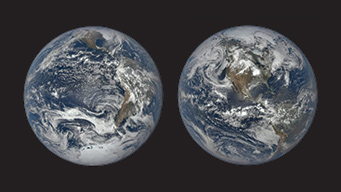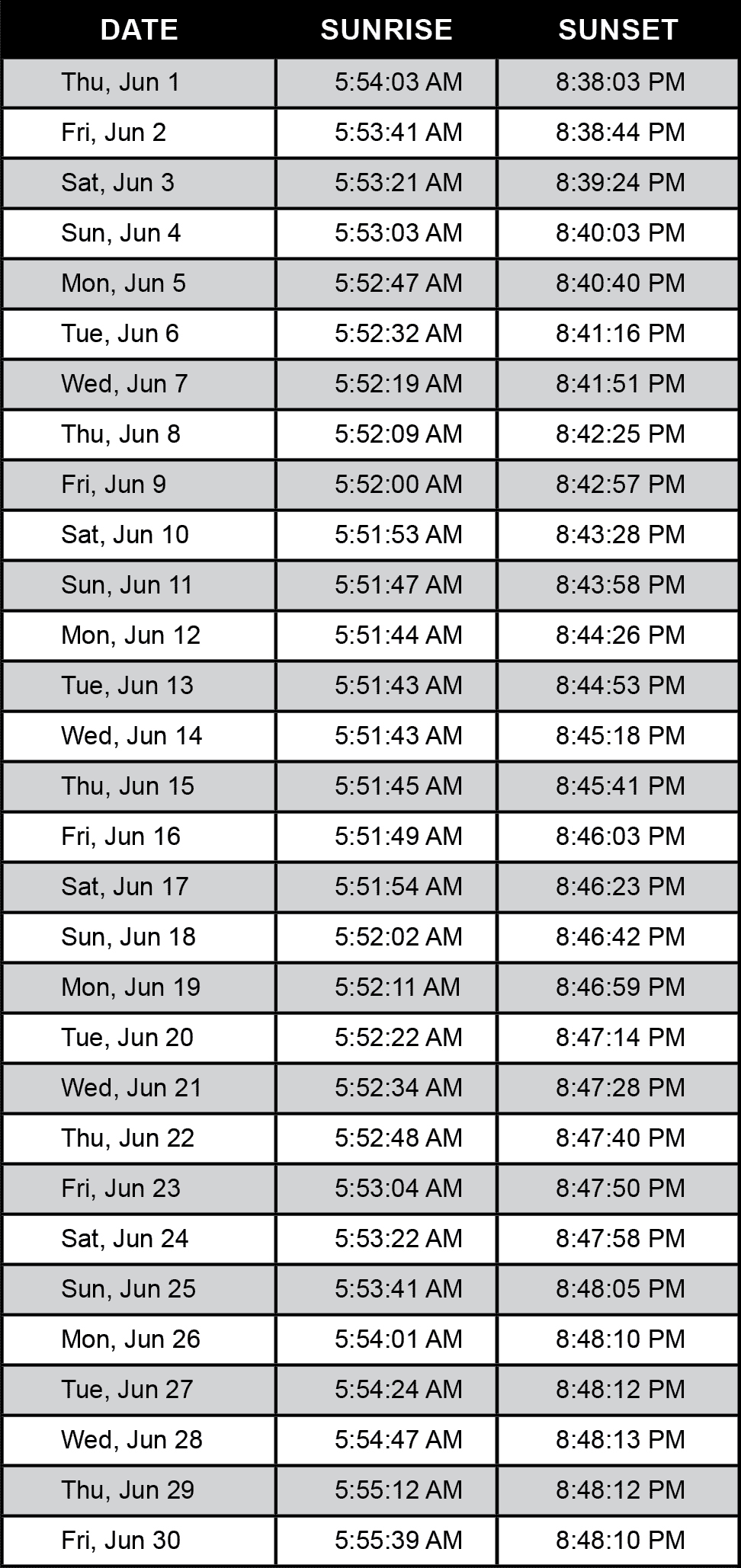|
|
DARK SKY HAPPENINGS - June 2023
Moab
UT (at City Hall)
38O34’ N Latitude
109O33’ W Longitude
4048 ft - 1234 m |
Solstice Shadows
from the archives of the NASA Dark Sky Network
Solstices mark the changing of seasons. These seasons are a result of Earth’s tilted axis, so half the year the Northern Hemisphere tilts toward the sun, and the other half the Southern Hemisphere does. Days of the most extreme tilt are solstices. Solstices were among the earliest astronomical observations, celebrated throughout history via summer and winter celebrations.
In 2023 the solstices arrive on June 21 and December 21 in Moab. The June solstice marks the Sun’s northernmost position in relation to Earth’s equator, resulting in the longest day for the Northern Hemisphere and the beginning of summer! December solstice marks the southernmost position, longest night, and beginning of winter. The opposite is true for the Southern Hemisphere. Earth’s tilt is enough that northern polar regions experience 24-hour sunlight during the June solstice, while southern polar regions experience 24-hour night.
While solstice days are dramatic in mid to high latitudes, observers between the Tropic of Cancer and the Tropic of Capricorn experience “zero shadow” days instead.
These days, with the sun directly overhead, objects cast a minimal shadow. If you want to see your own shadow, you have to jump! The Tropic of Cancer (north of the equator) experiences a zero-shadow day in June, and the Tropic of Capricorn (south of the equator) gets one in December. The equator experiences two zero-shadow days, one on each equinox.
Solstices provide information for serious science too. In approximately 200 BC, Eratosthenes observed sunlight shining straight down the shaft of a well on the solstice, near the modern Egyptian city of Aswan. Inspired, he compared measurements of the shadows between that location and the city of Alexandria. By calculating the difference in the lengths of shadows and the distance between the cities, Eratosthenes calculated an early estimate for the circumference of Earth – and provided further evidence that the Earth is a sphere!
Are you having difficulty visualizing solstice lighting and geometry? You can build a “Suntrack” model that helps demonstrate the path the Sun takes through the sky during
the seasons. And of course, discover the latest NASA science at nasa.gov.
 These images from NASA’s DSCOVR mission shows the Sun-facing side of Earth during the December 2018 solstice (left) and June 2019 solstice (right). Notice how much of each hemisphere is visible in each photo; December’s solstice heavily favors the Southern Hemisphere and shows all South America and much of Antarctica and the South Pole, but only some of North America. June’s solstice, in contrast, heavily favors the Northern Hemisphere and shows the North Pole and the entirety of North America, but only some of South America. Credit: NASA/DSCOVR EPIC
These images from NASA’s DSCOVR mission shows the Sun-facing side of Earth during the December 2018 solstice (left) and June 2019 solstice (right). Notice how much of each hemisphere is visible in each photo; December’s solstice heavily favors the Southern Hemisphere and shows all South America and much of Antarctica and the South Pole, but only some of North America. June’s solstice, in contrast, heavily favors the Northern Hemisphere and shows the North Pole and the entirety of North America, but only some of South America. Credit: NASA/DSCOVR EPIC
|
Sunrise-Sunset
(The time of sunrise and sunset assumes a flat horizon. Actual time may
vary depending upon the landscape.) |
 |
MOON HAPPENINGS
June 3 - Full Moon at 9:41 pm
June 10 - Third Quarter at 1:31 pm
June 17 - New Moon at 10:37 pm
June 26 - First Quarter at 1:49 am
|
Moab Dark Skies mission is to promote the appreciation and conservation of Moab’s valuable and rare dark skies. Moab Dark Skies was established by the Friends of Arches and Canyonlands Parks in conjunction with the National Park Service and Utah State Parks Division of Natural Resources
For more information, check out our Facebook page. |
|
|
|
|
|
|
|
© 2002-2024 Moab Happenings. All rights
reserved.
Reproduction of information contained in this site is
expressly prohibited.
|
|